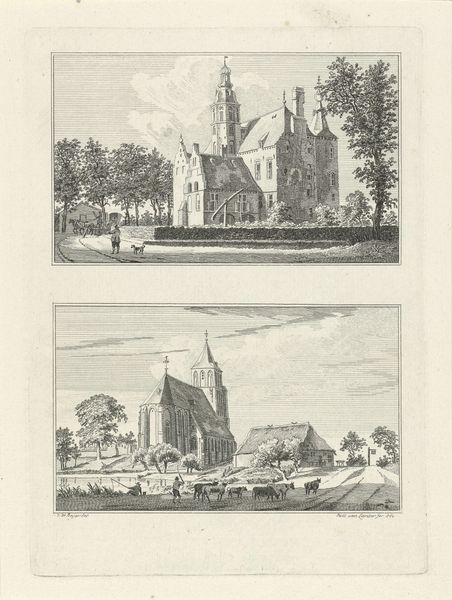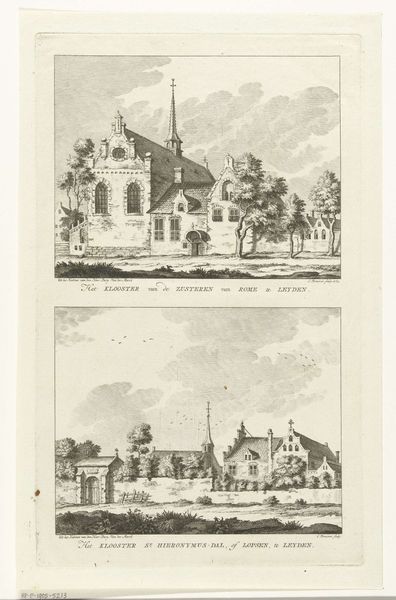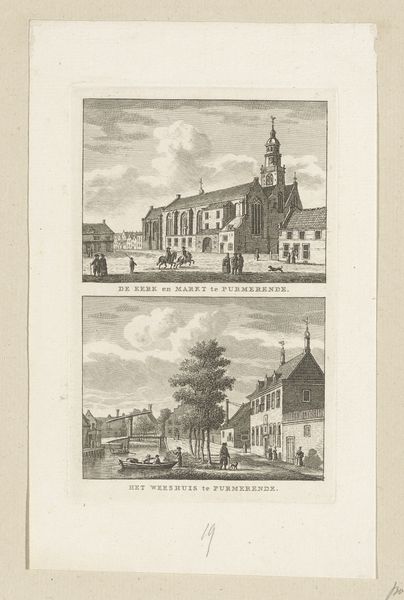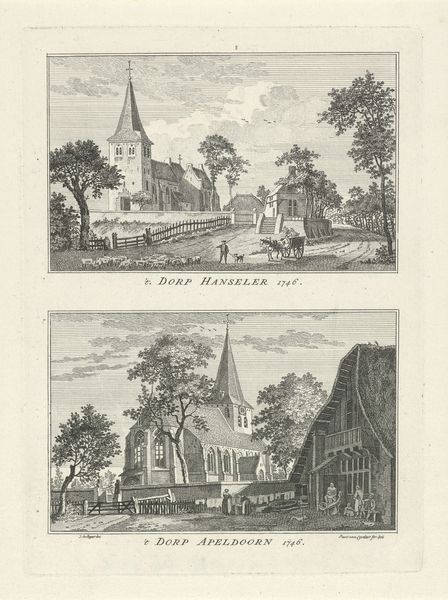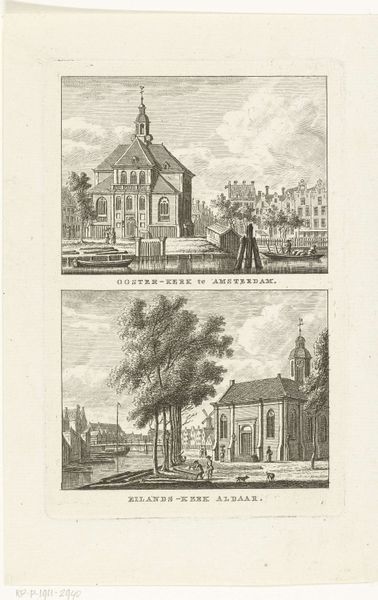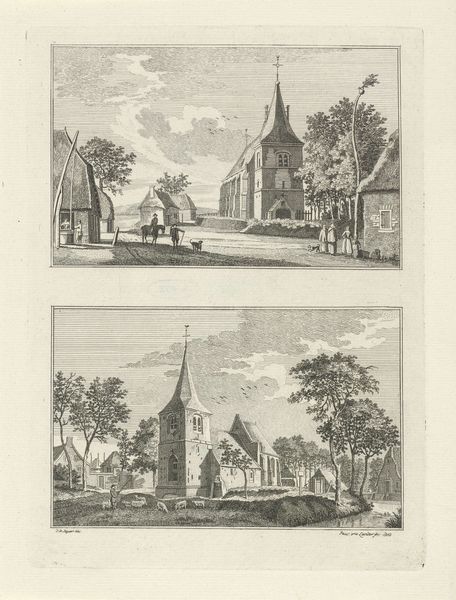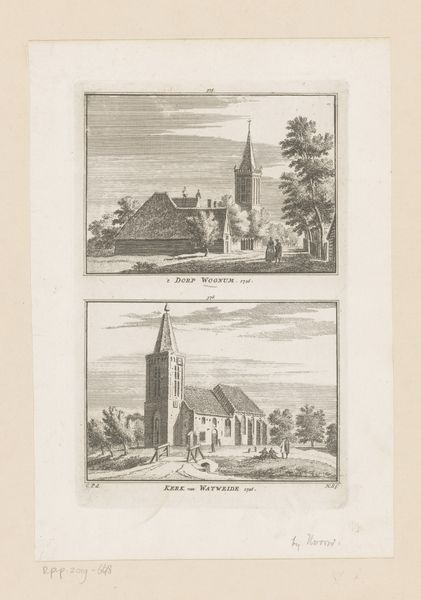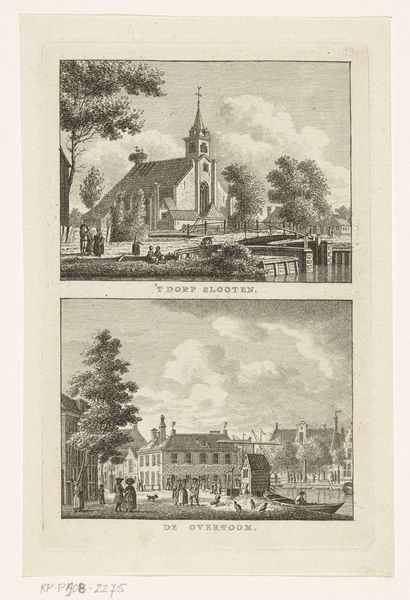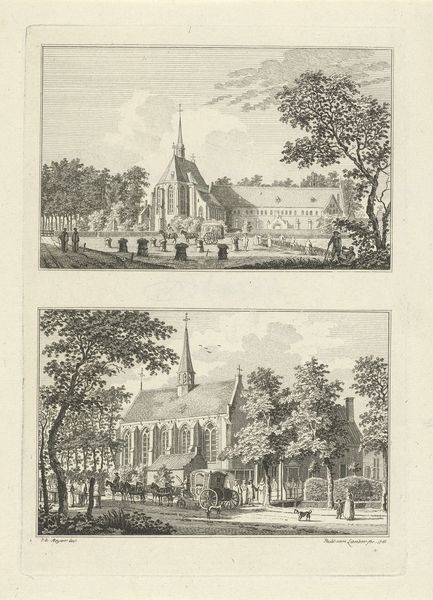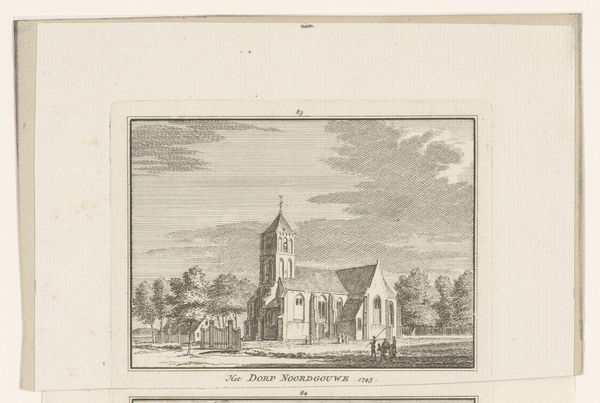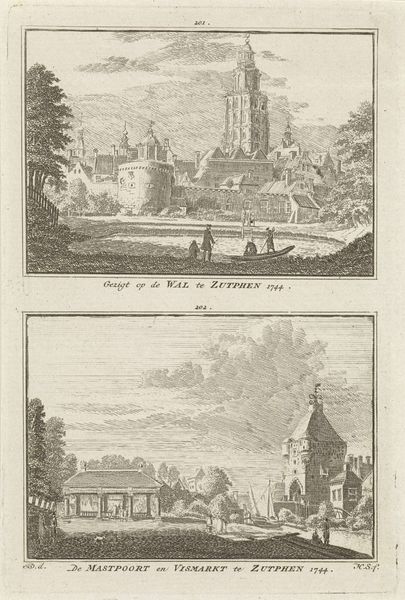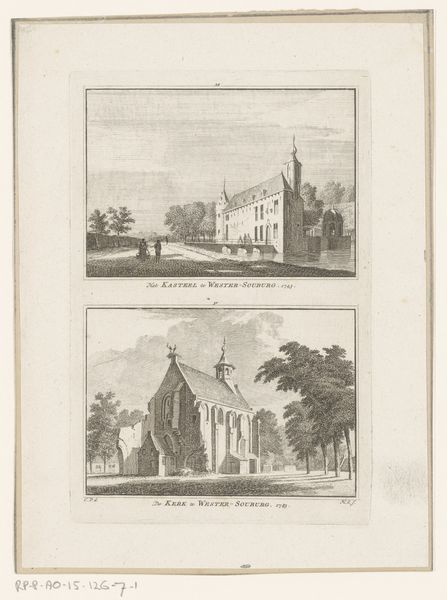
Dimensions: height 203 mm, width 141 mm
Copyright: Rijks Museum: Open Domain
This print was made in 1746 by Paulus van Liender and depicts the Willersche chapel and the Huis den Ham in the Netherlands. Prints like this served a public role in visualizing and documenting rural life and architecture during the Dutch Golden Age. The top half of the image shows the Willersche chapel, situated on a small hill, surrounded by grazing sheep and a shepherd. In the distance, we can just make out another building. The lower half depicts the Huis den Ham, a grand house next to a river, complete with a bridge and a horse-drawn carriage. Prints were often commissioned by wealthy patrons or institutions as a way to display their power and status. The detailed rendering of the buildings and the surrounding landscape suggests a desire to showcase the prosperity and order of Dutch society during this period. Understanding the social and institutional context in which art is produced is essential for interpreting its meaning and significance. By consulting historical records, architectural surveys, and other primary sources, historians can shed light on the social, economic, and political forces that shaped artistic production in the Dutch Golden Age.
Comments
No comments
Be the first to comment and join the conversation on the ultimate creative platform.
